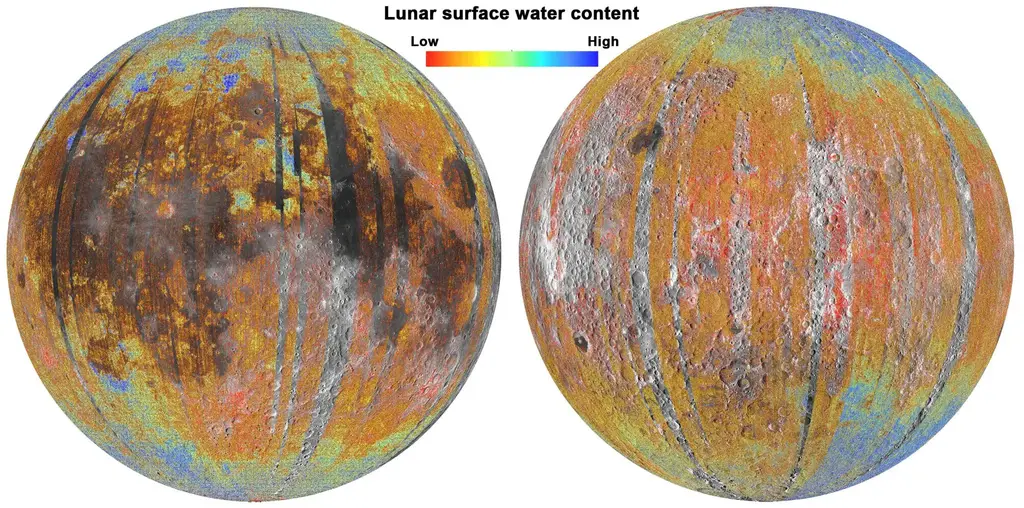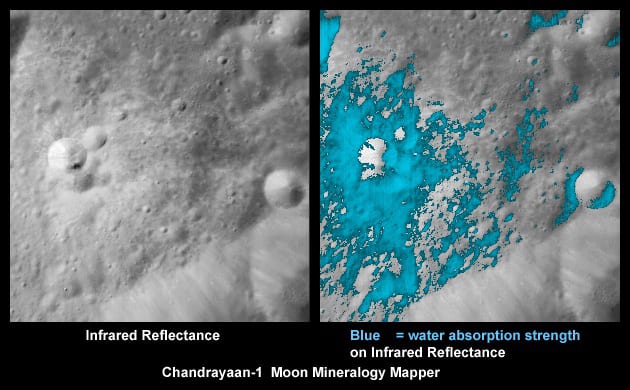We know that there’s ice on the moon. It’s very surprising, but we know this. But how it got there is a different issue. Now, a new study suggests an unlikely source: electrons from our planet.

The moon doesn’t have a proper atmosphere. As a result, it can’t really maintain liquid water — but it can store some frozen water. In the perpetual darkness of some of the moon’s craters, previous missions have found clear signs of frozen water.
A part of that could have been brought from external sources. The moon is continuously bombarded by meteorites, and many of them have water ice. But this doesn’t tell the whole story.
The SOFIA observatory (a joint project of NASA and the German Aerospace Centre) showed that diffuse water molecules in low concentrations can persist on the Moon’s sunlit surface, and researchers suspect that lunar water may also be produced on the moon, with the aid of solar wind.
Earth, water, and wind
Every second, the Earth is bombarded by the Sun with high-energy protons; this is called the solar wind. Thankfully, we’re protected from much of this radiation by the planet’s magnetic shield, called the magnetosphere. Because our planet’s core churns electrically charged iron, it generates a magnetic field large enough to extend out into space some 6-10 times the radius of the Earth.
The magnetosphere isn’t fixed in place, it’s constantly pushed and reshaped by solar wind. In particular, it makes a long tail on the ‘night’ side — the side that’s opposite to the Sun.

Previous studies showed that oxygen trapped in the Earth’s magnetosphere can oxidate iron on the moon when the moon passes through this tail. Now, Shuai Li, assistant researcher at the UH Mānoa School of Ocean and Earth Science and Technology (SOEST), wanted to see whether this effect could also be linked to water.
Solar wind is thought to be one of the main mechanisms that contribute to the formation of water on the moon. The protons in the solar wind chemically combine with the oxygen atoms present in the lunar minerals (oxides, silicates, etc) to produce small amounts of water trapped inside the minerals. This water could be subsequently released from the minerals.
Finding water on the moon

They reanalyzed data gathered by the Chandrayaan 1 mission between 2008 and 2009, looking specifically for signs of water — a testament to the fact that even years after a mission has ended, it can still offer valuable data.
The researchers were surprised to find clear signs that more water was being formed on the moon when it was in the tail of the Earth’s magnetosphere at which time it is being shielded from solar wind.
“To my surprise, the remote sensing observations showed that the water formation in Earth’s magnetotail is almost identical to the time when the moon was outside of the Earth’s magnetotail,” said Li. “This indicates that, in the magnetotail, there may be additional formation processes or new sources of water not directly associated with the implantation of solar wind protons. In particular, radiation by high energy electrons exhibits similar effects as the solar wind protons.”
“Altogether, this finding and my previous findings of rusty lunar poles indicate that Mother Earth is strongly tied with its moon in many unrecognized aspects,” said Li.
This shows just how big of an impact the Earth has on the moon, and how much we still don’t understand about the moon-Earth system. In the future, Li and colleagues want to persuade NASA to use the Artemis missions to study the lunar water content and lunar water formation in greater detail. This is particularly important because if we are to set up a long-term mission on the moon, a good understanding of the lunar water system and reserves is essential.
The study was published on September 14 in the journal Nature Astronomy.









